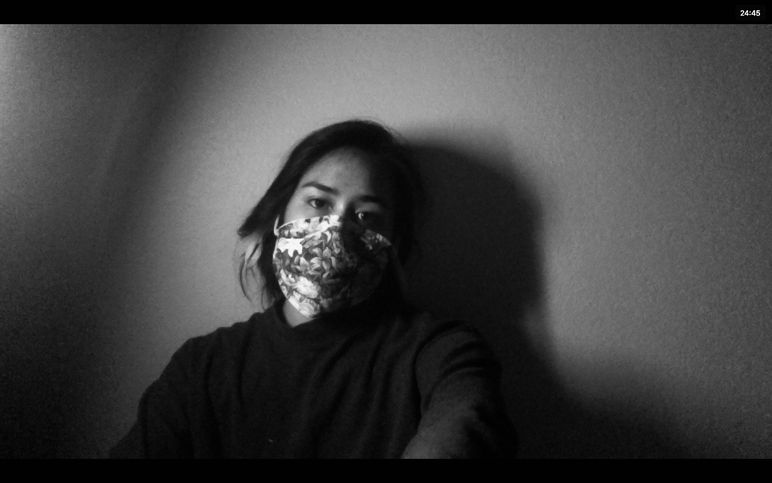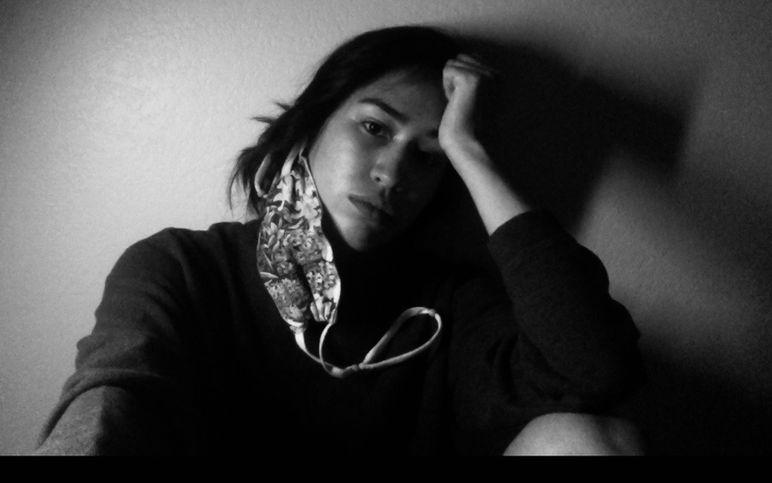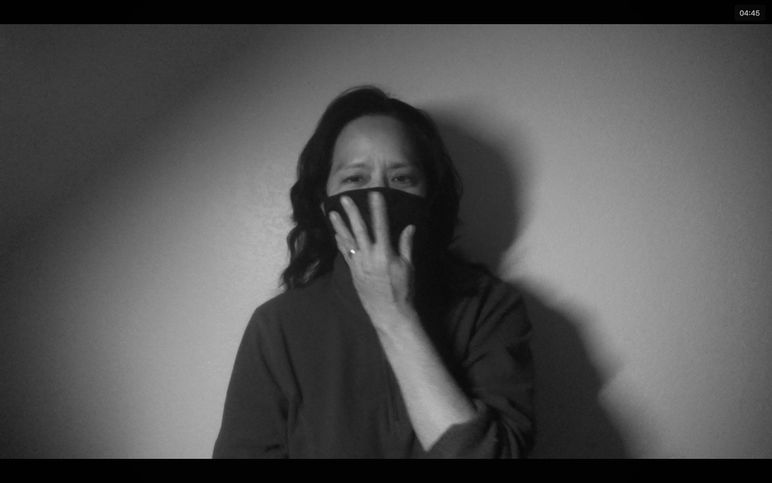"For stay-at-homes, prisoners, and the self-imprisoned, to live among the photographs of glamorous strangers is a sentimental response to isolation and an insolent challenge to it"
–Susan Sontag (On Photography, 127).
Part I
Growth & Decay
During the shelter-in-place order, my mom planted a garden. She sat out on the patio in between Zoom meetings with her seventh graders, planting seeds and watering her seedlings. After a week or two, she dragged the Earthboxes “from her “hippie days” out of storage and hosed them down. My dad and sister bought soil from town, and I helped her fill the boxes and transplant her seedlings. Now, she has two extremely active squash and zucchini plants, tomatoes and Swiss chard making moderate progress, and cauliflower and broccoli (pictured in the days shortly after transplanting) coming along. It’s not enough of a garden to survive a break-down in the supply chain, but it feels good to be outside and touch the leaves and watch the progress of the plants each day.
Plant, May 21-24 2020
In Thinking Photography, Victor Burgin argues that all objects have a socially-created meaning long before they appear in a photograph (and thus the photograph’s meaning is heavily influenced by the social definitions of the objects it depicts) (45-46). This pandemic is a time in which an incredible number of new social meanings are being created. I look at an image of plant, and think of the new trend of self-sustainability that is circulating as people I know have more time at home to garden, and are trying to inject a bit of certainty and food-stability into an uncertain future that could very well contain the breakdown of the supply chain. The bananas pictured here, photographed over the course of several days (my mom looked on with amusement each day I set up my lights and backdrop for this bunch of bananas), now call to mind a potentially dangerous trip to the store, equipped with mask and gloves and hand sanitizer. Now, more than ever, the fruit seems to age extremely fast and for people who have stocked up several months worth of food and not left the house in that time, the fleeting banana suddenly becomes a luxury item.


Bananas, May 21-24 2020
Each day is different, but looking back, they feel indistinguishable.
The day the shelter-in-place order was signed, I moved back into my childhood home with my parents, younger sister, and beloved little dog. Except for one afternoon, where I went to see my friend before her wedding, I haven’t left this place to see anyone in 11 weeks. I live in a bubble here, on 90 acres in Northern California, 20 minutes from the nearest small town.
Here is a collection of objects that are all around me and that I interact with on a daily basis.

Ordinary Circles, May 24 2020


Yoga, May 22-26 2020
As a result of this shelter-in-place order, the daily practices I’ve had to establish for myself have become very important for creating a sense of structure and movement within my days. One of the things I’ve begun doing is yoga, to help with my physical therapy routine and to counteract the soreness and stiffness of my body after sitting for hours in a Zoom meeting. In this case, I’ve documented how this practice uses the same component (mat + body), but is different each day (depending on the weather, my mood, what I ate, when I went to sleep, etc).
My childhood home has been my constant environment these past few months, and is where I work, eat, sleep, go to school, digitally interact with friends, and binge tv. And it also represents this profoundly weird phenomenon where I feel like I’ve travelled back in time. I love my family, but I can’t shake the feeling that I’ve had to shape myself into a previous version of myself in order for us to all get along. And what worries me is how comfortable that version is. I don’t want all the anxiety I worked to overcome in order to attend college to go to waste. I don’t want to get sucked into comfort and stop growing. Less than two weeks away from my college graduation, I keep telling myself this is a temporary pause, that life is only on hold for a moment.
This grid of images, inspired by Fluxus artist Dóra Maurer (specifically her “Reversible and Changeable Phases of Movement” studies) shows the passage of time, though there is no clear way to discern chronological order. This grid of images summarizes how I have felt during this experience: Each day is different, but looking back, they feel indistinguishable.

Roofline of My House, May 13-June 1 2020

In the spirit of Fluxus and “life is art” and the idea of performing my own life, I created this next grid, photographing my bedding each morning after I woke up (to see just how late I got up, go to the next grid). This particular subject was inspired by Dóra Maurer’s "13 Traces" zine.
This grid of images relies on what Simon Watney calls "making strange" or "ostranenie.” In the context of photography, this refers to strategies that force the viewer to perceive objects in a new way and so become aware of their own preconceptions (also known as "defamiliarization") (Thinking Photography, 154-176). In this case, a tightly cropped overhead view makes the blankets feel like abstract shapes, and the environment they are in feels unclear. However, Susan Sontag notes, "we don't know how to react to a photograph... until we know what piece of the world it is"(On Photography, 71-72), which is why I’ve titled the images as I did, denoting the object depicted as well as how much time passed in the creation of the final grid.
Bedclothes in the Morning, May 24-June 1 2020

When I Sleep and Wake, May 22 - June 2 2020
Partly documentation of me performing my own life, part personal data visualization, this is a grid made up of screenshots I took on my phone right before I went to bed and as soon as I woke up. The blank squares are the times I missed documenting.
Throughout this project, I have been particularly interested in the kinds of works I can produce within the constraints of the technology I’ve been using on a daily basis during COVID-19, namely, my old iPhone SE and 2011 MacBook Pro. (In a way, this choice mirrors how we have all had to learn how to function within a new set of constraints and yet still somehow manage to create.) I’ve been interested in discovering alternate ways to use these tools to create images, using not just the built-in cameras, but also the camera-less screenshot features on these devices.
As you can see, grids and sequences play a major role in this essay, and these devices come equipped with natural grids (such as the way photos are displayed in the native app on my phone, and the way Zoom displays class video calls on my laptop).
In particular, using grids to display images of the same subject across different days feels like the clearest way to express the idea that each day is unique, though from a birds-eye-view, the similarities are far more overwhelming than the differences. Most of the grids you have seen so far on this page utilize what Victor Burgin calls the "third effect" to create, in this case, a sense of the passage of time that a single image from this grid would not be able to communicate (Thinking Photography, 67-68).
Part II
ZOOM
As Allan Sekula (Thinking Photography, 92-94) and Susan Sontag (On Photography, 82) postulate, a photograph’s meaning depends on context. Sekula believes it's critically important for viewers to understand the historical context of the photographs they view. Then, they can understand not just the artist's intention, but the various schools of though the artist was (often unconsciously) subscribing to. This context allows the viewer to unpack a photograph's message. Sontag also discusses how the meaning of a photograph is completely context-dependent: "Because each photograph is only a fragment, its moral and emotional weight depends on where it is inserted. A photograph changes according to the context in which it is seen" (On Photography, 82). Thus photographic meaning changes depending on a photograph's caption, where it is displayed, and the images it is displayed alongside.
In this case, the images in this essay, and especially this section, wouldn't make sense without context of the global COVID-19 pandemic, and resultant online Zoom experience for many university students and workers like myself.
Talking to Myself, May 22-29 2020

Zoom Class (Redacted), May 21-29 2020

In this new Zoom reality, there is so much to think about and to comment on. This platform has become the normal way I interact with others outside of my home (my friends, classmates, professors, TAs, coworkers, supervisor, piano students, etc.) Using this platform creates an element of unbridgeable physical distance, while perhaps sitting closer to someone’s face than I normally would in real life. With the timer in the corner of the call, there is a sense of being recorded and timed. We are hyper-seen but also muted and voiceless (not to mention the fact that no one looks at us as much as we stare at ourselves while on a call). There is also an element of voyeurism, looking that the other people who are listening to the current speaker, and a fascination with other’s backgrounds and getting an intimate glimpse into their lives that we normally wouldn’t have access to.
Twill (My Zoom Class as Pixels), May 21 2020
As Sontag points out in her characterization of American photography, photography has gone from considering the artist as a “hero,” to now parodying this idea (On Photography, 23). Now, "the photographer now patronizes reality" (On Photography, 38). I think this idea of “parodying”/”patronizing” is quite relevant to my low-pixel-count Zoom screenshots as I explore selfies, street photography, and portraiture in this new paradigm.
Covid Selfie, May 21 2020

Covid Street Photography, May 21 2020


Commencement 2020 (FREE!)
Part III
covid portraits
In keeping with this theme of the features of my daily life, I wanted to capture portraits of the people (my family) that I am in quarantine with.
As we delve into these images, I’d like to address a “small format deadpan aesthetic” that is present throughout this essay. In the essay titled "Why Art Photography," Lucy Soutter describes the "large format deadpan aesthetic"and uses works by Bernd and Hilla Becher and Andreas Gursky as examples. I like to think of the images in this essay as a "small format deadpan aesthetic" because, for the most part, the subjects are shot square on, not abstracted or disguised, and so what you see is what you get. And because of the technological choices, the often blurry, low quality of the images couldn’t be further in form from the large format images of Gursky and the Bechers. However, this aesthetic choice feels apt in this time, when nothing seems certain or clear and we are all getting by doing the best we can. And as Sontag says, "imperfect technique has come to be appreciated precisely because it breaks the sedate equation of Nature and Beauty" (On Photography, 79) (and this is also how I justify my low-quality, “made for the screen” aesthetic, which I am quite enjoying).
self portraits
brian
wren
Lastly, all images in this essay are in black and white. The most basic reason is that this was how the assignment was structured. However, this also contributes to the “deadpan” feel, as most images in this category are in grayscale or have very muted colors. The monochromaticity also makes all the images in this essay cohesive (across different environments, colors, lighting, cameras, etc). Additionally, as black and white images emphasize form, texture, and composition and disguise pixelated noise as "grain," I can get away with using low-pixel-count images and what in color would be atrocious white balances. Additionally, using grayscale automatically lends a sense of timelessness to an image, and although this piece is rooted in time, the memories and experiences this work refers to during the pandemic feel timeless. Finally, using monochromaticity hearkens back to the origins of photography, even as these images themselves are the product of modern technology (sometimes even camera-less technology, as with the screen shots).
hana
Conclusion
Through this photo essay, I wished to discuss the uniqueness and monotony of each day, using the changing/fixed objects/spaces that have become a part of my daily existence.
While I am wary of entering into the "art photography" debate (especially as put forward by Lucy Soutter and Michael Fried), I don't think I can help it as I discuss why I made these images (aside from the "this was my final project for Art120" reason). Since these images (whatever their pixel count) were planned and intentionally carried out, they are not mere snapshots (despite being snapped on a phone). Documentation (of people, of objects, of the passing of time) is a better description. A few of the images (such as Yoga and Bedclothes in the Morning) could be described as documentation of performance (as I perform my daily life and rituals of getting out of bed, exercising, etc). Is this art photography? By the ideals of the Fluxus movement, which, (though not necessarily well-defined) generally holds that art is inherently tied to life, sure, these images are art (or, perhaps, documentation of art). And although this work does not involve the audience in its creation, perhaps these words that accompany the images serve to break down barrier between photographs and audience (another tenant of the Fluxus movement).
I hope a wider audience can relate to these images from my experience as a UCSB student living in a bubble removed from the world, back in her childhood home in the months before graduating during COVID-19. I hope these Fluxus-inspired images communicate the uniqueness and monotony of these days, with both seriousness and humor.
Thank you for your time.
works referenced
Thinking Photography by Victor Burgin
On Photography by Susan Sontag
"Why Art Photography" by Lucy Soutter
Why Photography Matters as Art as Never Before by Michael Fried
"Reversible and Changeable Phases of Movement" studies and "13 Traces" zine by Dóra Maurer
BIO

Just a math/art major trying to graduate in the midst of a pandemic.
@olive0016 | view my website



















